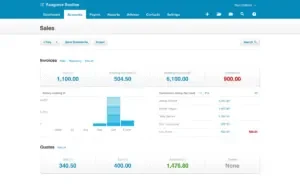
In this area, researchers study how to apply blockchain to accounting and design data flows and architectural features. Figure 2 represents our steps using a PRISMA diagram (Page et al., 2021), which we adjusted to enhance its fit for a qualitative systematic review. The PRISMA flow diagram depicts the flow of information through the different phases of a systematic review. It maps the number of records identified, included and excluded and the reasons for exclusions. We opted not to exclude papers that were published in journals with moderate- to low-impact factors. Moreover, as blockchain is a recent topic, we decided to include conference papers and book chapters.
As noted earlier, some form of digital money had existed before the advent of Bitcoin, resulting in several P2P networks being in existence for many years. For example, Sean Parker, who later became one of Facebook’s founding executives, had created a famous P2P network known as ‘Napster’, which was a file-sharing application (Carter & Rogers, 2014). The implications of blockchain for the accounting profession are many, according to an article on the ICAEW website.
- Blockchain technology reduces the possibility of disputes by fraudsters and scams.
- It is important to note that organizations can control access to the data, both in terms of who can access the data and what data can be accessed.
- Hojckova et al. (2020) study the success factors of blockchain-based P2P electricity trading.
In this case, accountants, regulators, auditors, and clients would each have an identical copy of the portion of their records. HCLLP monitors all the transactions done under blockchain, and we also help a user to establish proper blockchain accounting systems. Smart contracts will also have a significant impact on both accountants and auditors. Through smart contracts, accounting control and verification procedures could be implemented, and the question is whether financial reporting standards requirements could be implemented through smart contracts. Smart contracts could also be used to obtain and analyse audit data from the system.
ISACA Journal
Furthermore, many transactions recorded in the financial statements reflect estimated values that differ from historical cost. Auditors will still need to consider and perform audit procedures on management’s estimates, even if the underlying transactions are recorded in a blockchain. We are looking to use blockchain technology, such as Hyperledger Fabric, to create collaboration on CO2 emissions and climate change by creating an open source framework for accounting for CO2 emissions. We believe Hyperledger Fabric could help automate data gathering at scale, maintain audit trails where no central authorities exist, and build trust through transparency and open source. Finally, blockchain developments should not be seen independently of other technological developments. The real-time ability of blockchain makes the integration of such technologies more possible.

Although auditing will continue to evolve (as it always has), auditing is likely to be around well into the foreseeable future. Using a personal home computer in 2015, it would take about 98 years to mine just one Bitcoin. On an aggregate basis, mining would represent the seventh largest country by electricity consumption. However, private keys could be lost, which makes them untraceable and holders thereof would lose the benefits.
Becoming a CPA
Blockchain technology has the potential to be a useful tool, but should be regarded with skepticism when it comes to its utility and implementability in organizational settings. Many organizations will likely be reluctant to share sensitive data (i.e., contract information, payroll) on a public blockchain and are asking important questions about the nature of blockchain and its future uses. The data requirements would be large compared to a traditional system and is a concern that needs to be addressed if blockchain is to enjoy widespread adoption. It is likely that many enterprises will try to harness this new technology and create value with it. Addressing blockchain technology with respect to accountancy (accounting and auditing) will eliminate misconceptions, answer questions and, most importantly, look for the true value that blockchain technology can bring to the accounting world.
- As with any profession, expertise is what accountants get paid for, and now, such expertise will be needed more than ever to analyze financial results rather than focusing on the mundane tasks of reconciling and verifying transactions.
- Thus, the primary function of a coin is to convey value between participants in the crypto economy.
- The implication for both accounting and auditing is whether reliance could be placed on the integrity of the blockchain system and not on the trust of intermediaries and related regulators.
- At the same time, these features of blockchain could threaten accountants’ basic work.
- Blockchain technology can also create a decentralized ledger that is accessible to all parties involved in a transaction.
However, with the blockchain comes a number of additional demands, especially as it becomes more and more embedded within mainstream finance. Along with data analytics and machine learning, the blockchain will make some more tedious tasks easy to automate, but accountants will be needed to ensure accuracy and provide the analysis of the information their employers or clients need. As with any profession, expertise is what accountants get paid for, and now, such expertise will be needed more than ever to analyze financial results rather than focusing on the mundane tasks of reconciling and verifying transactions. A blockchain-based supply chain process could facilitate instant tracking, preserve privacy through a private chain with preauthorization, reduce costs related to updating information, enable automatic payments and, in general, improve automation (Chang et al., 2019).
Moreover, Autore et al. (2020) found that a firm announcement regarding its investment in blockchain leads to an increase in its stock price. However, these findings contrast with Austin and Williams (2021), who state that there is no evidence that disclosing information about blockchain investments positively affects investor judgments. Another part of this research topic focuses on studying the financial performance of cryptocurrencies (Trucíos, 2019; Le et al., 2021). Alfieri et al. (2019) argue that Bitcoin is similar to common stock, has an excellent risk–return profile and represents an opportunity for portfolio diversification.
Accounting and auditing with blockchain technology and artificial Intelligence: A literature review
Bitcoin’s Proof of Work scheme was the basis for modern blockchain-based digital currencies. Since then, many networks have sprung up with their own digital coins and tokens. All of the blocks and transactions are encrypted, adding another layer of security to the blockchain data.
If the result is less than the target value (pattern), the computed hash solved the proof and the block is added to the blockchain. Blocks are linked creating the so-called blockchain by including in each block header the hash of the previous block header. Gabriella also serves as board director at the Global Digital Asset and Cryptocurrency Association, a global voluntary self-regulatory association for the industry where she supports awareness building and education. Smart contracts can easily and cost effectively transfer ownership of a car or transfer corporate shares without needing a third party, such as a bank or a stockbroker, and with immediate settlement.

This has made blockchain accounting a hot topic, especially for those in the accounting profession. Schools and big accounting firms like Deloitte are already educating on blockchain accounting. Accountants will not need to be engineers with detailed knowledge of how blockchain works. But they will need to know how to advise on blockchain adoption and consider the impact of blockchain on their businesses and clients. They also need to be able to act as the bridge, having informed conversations with both technologists and business stakeholders. We have satisfied a massive range of business accounting needs by our highly secured and technically superior accounting based on blockchain technology.
The Impact of Blockchain
As the blockchain offers a platform for the implementation of smart audit processes, these processes can be distributed to the participating nodes, thereby meeting the needs for timelier and more transparent audit reporting. Performing auditing of the company’s financial position would be less essential if some or all the transactions that make up that position are visible or stored on the blockchains. A blockchain, when combined with suitable data analytics, can facilitate the transactional level assertions in the audit, and the skills of the auditors will be better used answering higher level questions. The accountants and the accountancy firms that embrace the technology and understand its underlying concepts would be the ones most highly sought after in the coming years. With every day passing, a blockchain-oriented future is looking even more likely.
High levels of control and automation
To create the Merkle root, hashes of two records are hashed together to produce a hash of the combination, and then the process is repeated moving up the tree until all the records in the block are represented in one hash. Figure 5 illustrates this process for four transactional records (Trans1, Trans2, Trans3 and Trans4). The consummation of transactions and payments through fiat money will normally involve a third party aside from the payer and the payee. The traditional banking system usually acts as this trusted third party and has been referred to as ‘go-betweens’ among the payers and payees (Rossi, 2004). However, with the introduction of cryptocurrencies, the trusted third party is done away with because the inclusion of a transaction in a blockchain ensures its finality, as well as its verifiability by many other participants in the blockchain (Dwyer, 2014).
This is particularly interesting in the context of the energy sector, where renewable energy and carbon credits are intangible tradable items. The application of blockchain to supply chain management is particularly intriguing in relation to the monitoring of workers’ rights, slavery and unethical behaviors because it contributes to tracking and assuring the entire process. The objective of the article is to highlight the possible implications of blockchain for accounting practice, from both an accounting and an auditing perspective. Questions addressed are whether the accountant and auditor will be able to rely on the integrity of the blockchain system based on new governance and control systems and whether the accountant and auditor could accept the authenticity of the captured accounting data.
What is Blockchain Accounting? A Primer for Small Businesses
Blockchain technology can help streamline many of the manual and time-consuming processes involved in financial transactions. For example, blockchain technology can automate the recording and reconciliation of transactions, reducing the need for human intervention and potentially eliminating errors or discrepancies. Blockchain technology can also enable the creation of smart contracts, which are self-executing agreements that can automatically trigger payments or other actions based on predetermined conditions. This can help streamline accounting processes and reduce the need for intermediaries or third parties. This level of transparency can help reduce the risk of fraud and errors, leading to increased trust between businesses, clients, and regulators. However, transactions, recorded through blockchains, need digital currency exchange.
But that puts your accounting data in the hands of potentially unauthorized users. This transparency in blockchain works well for teams working in collaborative environments. Organizations can employ developers to write algorithms to automatically execute Journal Entry for Discount Allowed and Received accounting functions. Tasks like periodic amortization, discounted cash flows, risk assessments, and inventory thresholds in designated ledgers can be easily automated. This can be vital for automating business processes and improving company efficiency.
